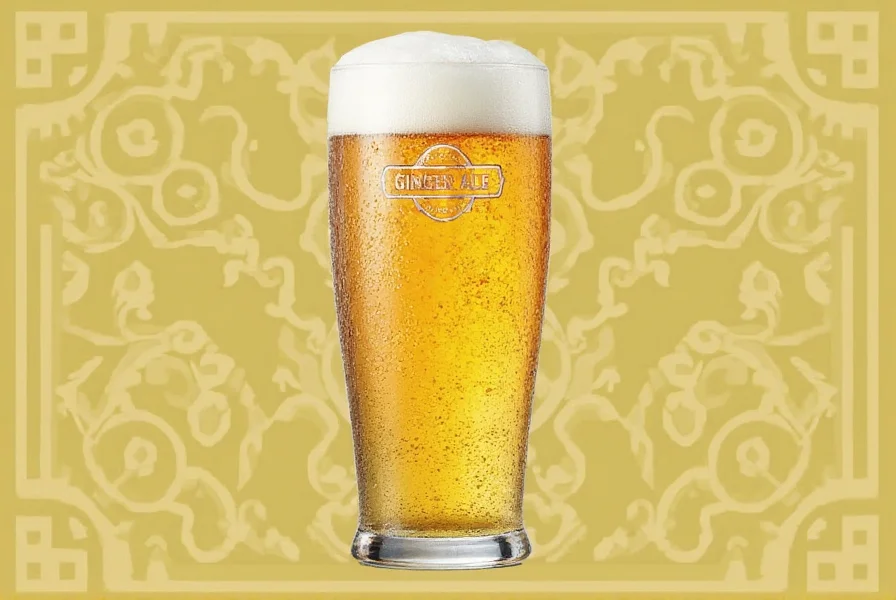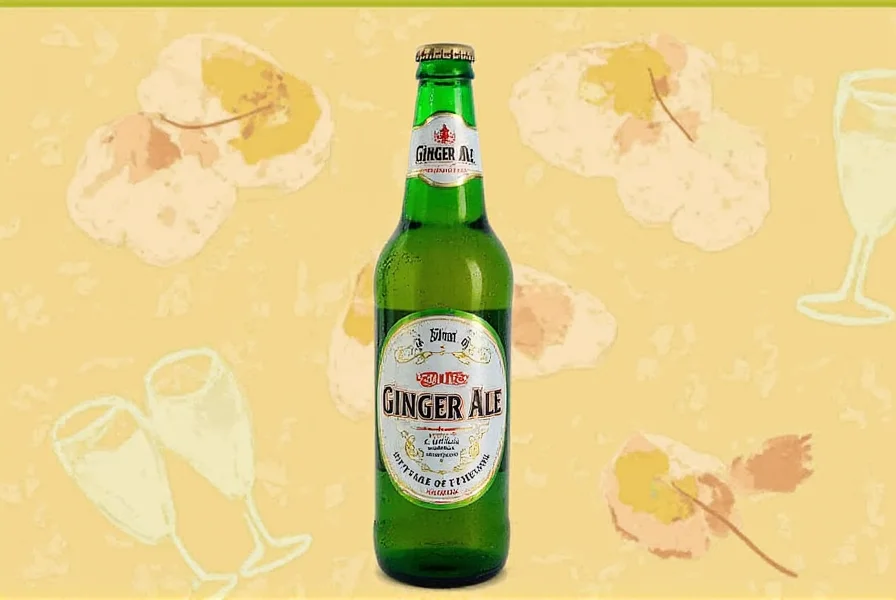When you search for real ginger ale, you're likely trying to distinguish authentic fermented ginger beverages from the mass-produced versions lining supermarket shelves. Understanding this difference matters for both flavor enthusiasts and those seeking potential digestive benefits associated with fermented foods.
The History of Authentic Ginger Ale
Ginger ale originated in 19th century Ireland and Canada as a fermented remedy for digestive issues. Traditional authentic ginger ale recipe methods involved fermenting fresh ginger root with sugar and water using a starter culture like "ginger beer plant" or whey. This natural fermentation process created a lightly carbonated beverage with subtle alcohol content (typically under 0.5%) and beneficial probiotics.
By contrast, most commercial ginger ales today are simply carbonated soft drinks flavored with ginger extract or artificial ginger flavoring. These products lack the complexity, probiotic content, and subtle tang of traditionally made ginger ale.

What Makes Ginger Ale "Real"
The key distinction between real ginger ale and commercial ginger ale lies in the production method:
| Characteristic | Real Ginger Ale | Commercial Ginger Ale |
|---|---|---|
| Production Method | Natural fermentation | Carbonated water with flavoring |
| Ginger Content | Fresh ginger root | Ginger extract or artificial flavor |
| Carbonation | Natural from fermentation | Injected CO2 |
| Alcohol Content | Trace amounts (usually <0.5%) | Non-alcoholic |
| Probiotics | Present from fermentation | Absent |
Health Aspects of Traditional Ginger Ale
While not a miracle cure, traditionally fermented ginger ale health benefits stem from two main components:
First, ginger itself contains gingerols and shogaols, compounds studied for their potential anti-nausea and anti-inflammatory properties. The American College of Gastroenterology recognizes ginger as potentially helpful for nausea relief.
Second, the fermentation process introduces beneficial bacteria. Unlike commercial versions, authentic fermented ginger ale contains probiotics that may support gut health. However, these benefits depend on the beverage not being pasteurized after fermentation, which would kill the live cultures.
It's important to note that real ginger ale nutrition still includes sugar, as it's necessary for the fermentation process. A typical homemade version contains about 5-10 grams of sugar per serving after fermentation, compared to 20-30 grams in commercial versions.
How Traditional Ginger Ale Is Made
The traditional ginger ale fermentation process follows these basic steps:
- Grate fresh ginger root and combine with sugar and water
- Add a fermentation starter ("ginger beer plant," whey, or a small amount of previous batch)
- Cover with breathable cloth and ferment at room temperature for 2-5 days
- Bottle in sealed containers for secondary fermentation (creates carbonation)
- Refrigerate to slow fermentation when desired carbonation level is reached
This process creates natural carbonation through continued fermentation in the sealed bottles. The ginger beer plant—a symbiotic culture of bacteria and yeast—is what gives authentic ginger ale its distinctive flavor and probiotic properties.

Identifying Authentic Ginger Ale Products
Finding commercially available real ginger ale products requires careful label reading. Look for:
- "Fermented" or "naturally carbonated" on the label
- Ingredients listing only ginger, sugar, water, and possibly a starter culture
- Refrigeration requirement (indicates live cultures)
- Shorter shelf life (typically 2-4 weeks)
- Cloudy appearance (from live cultures)
Brands that produce traditionally fermented ginger ale are often craft beverage companies rather than major soft drink manufacturers. These products typically cost more but offer the authentic flavor and potential benefits of real ginger fermentation.
Ginger Ale vs. Ginger Beer: Understanding the Difference
Many people confuse ginger ale vs ginger beer differences, but they're distinct beverages:
- Ginger beer traditionally has a higher ginger content (up to 20% ginger by weight), stronger flavor, and slightly higher alcohol content (up to 3-4% if fermented longer)
- Real ginger ale has a milder ginger flavor, lower sugar content after fermentation, and is typically less spicy
- Commercial "ginger beer" is often just a stronger-flavored soft drink without actual fermentation
The distinction has blurred in modern commercial production, but traditionally, ginger beer was the stronger, more alcoholic fermented beverage, while ginger ale was a milder, lower-alcohol version created later.
Practical Considerations
If you're interested in experiencing authentic ginger ale, you have three options:
- Make your own using a traditional ginger ale recipe (most authentic option)
- Seek out small-batch craft producers who use fermentation
- Check health food stores for refrigerated, fermented ginger beverages
When evaluating commercial products, remember that "made with real ginger" doesn't necessarily mean it's fermented. Many products use real ginger extract but still follow the carbonated soft drink production method rather than traditional fermentation.
Frequently Asked Questions
Does real ginger ale contain alcohol?
Traditionally fermented ginger ale contains trace amounts of alcohol (typically less than 0.5%) as a natural byproduct of fermentation. Commercial non-fermented ginger ale contains no alcohol. The alcohol content in authentic fermented ginger ale is comparable to that found in kombucha or some fruit juices.
Is real ginger ale better for nausea than commercial versions?
Authentic fermented ginger ale may be more effective for nausea relief because it contains higher concentrations of gingerols from fresh ginger and potentially beneficial probiotics. However, the effectiveness depends on the actual ginger content, which varies between products. Look for products with at least 1% fresh ginger by weight for potential digestive benefits.
How long does homemade ginger ale last?
Properly refrigerated homemade ginger ale typically remains fresh for 2-3 weeks. The fermentation process continues slowly even in the refrigerator, so the flavor will become more vinegary over time. Always "burp" the bottles periodically during the first week to release excess pressure and prevent explosions.
Can I make real ginger ale without sugar?
Sugar is essential for the fermentation process in traditional ginger ale, as it feeds the yeast and bacteria. However, most of the sugar is consumed during fermentation. For a lower-sugar option, you can reduce the initial sugar amount (though this affects carbonation) or use a shorter fermentation time. Some people substitute honey or maple syrup, but these can alter the flavor profile significantly.










 浙公网安备
33010002000092号
浙公网安备
33010002000092号 浙B2-20120091-4
浙B2-20120091-4